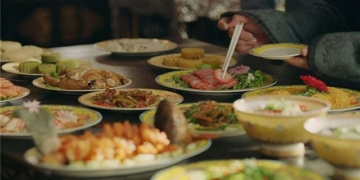Leftover food will undergo a processing procedure to be recycled into fertilizer or biogas, serving the lives of the citizens of South Korea.
Globally, approximately 1.4 billion tons of food are wasted each year, most of which ends up in landfills. Decomposing food can contaminate water and soil, while also releasing methane, one of the potent greenhouse gases.
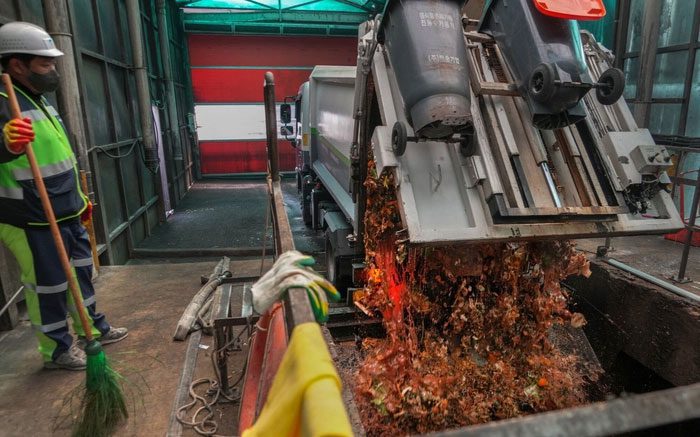
Globally, approximately 1.4 billion tons of food are wasted each year.
To tackle this problem, South Korea banned the disposal of food waste in landfills nearly 20 years ago. Most surplus food is processed into animal feed, fertilizer, and heating fuel.
South Korea’s food waste processing system has helped recycle about 90% of the food that is thrown away. Due to its high efficiency, this system has been studied and emulated by many international experts. Officials from various countries such as China and Denmark have visited these recycling facilities in South Korea. According to a spokesperson from the New York sanitation department, the city has adhered to South Korea’s food processing system for many years and will soon require residents to separate food waste.
Scientist Paul West, who studies measures to reduce carbon emissions, stated: “South Korea’s system helps significantly reduce emissions on a large scale.”
Why does South Korea have a high amount of food waste?
The reason lies in the culinary traditions of South Korea. Banchan, or side dishes, during meals can total dozens of items. In fact, the amount of leftover food has been buried underground for many years.
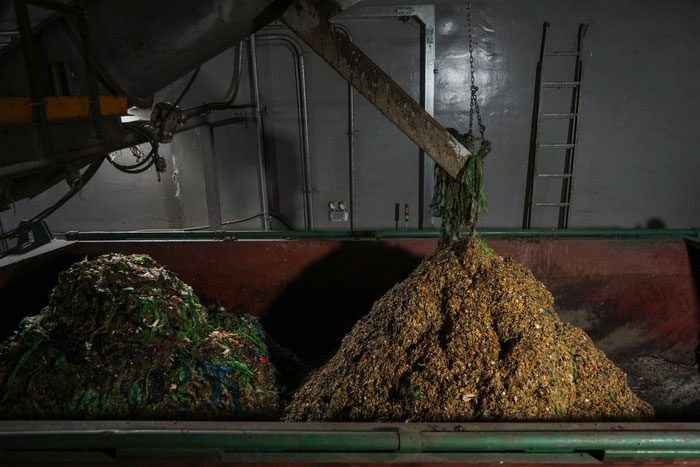
Food waste is separated from plastic bags at the Goyang facility.
However, the country’s mountainous terrain makes it difficult to build landfills, and the proximity of residential areas complicates matters. In 1995, the government imposed regulations mandating the recycling of paper and plastic; however, leftover food was still disposed of alongside other waste.
Kee-Young Yoo, a researcher at the government-run Seoul Institute, noted that residents living near landfills often complain about foul odors, which is why they strongly support policies to remedy this situation. It is known that stews are a staple of Korean cuisine, so the amount of food waste here has a high water content. This leads to a greater volume of waste and more unpleasant smells.
Since 2005, sending food waste to landfills has been illegal. Local authorities have established hundreds of facilities to handle surplus food.
Methods for Managing Food Waste
At Jongno Stew Village, a popular lunch spot in the Dobong district of northern Seoul, braised mackerel and kimchi stew are the best-selling dishes. However, owner Lee Hae-yeon only serves side dishes that include kimchi, tofu, boiled bean sprouts, and perilla leaves. Mr. Lee shares: “Customers can help themselves to extras, and people tend to take more than they can eat. Koreans love a table full of food.”
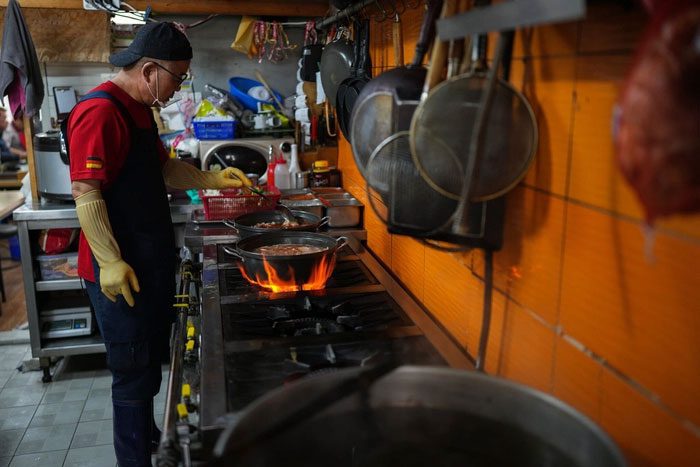
Lee Hae-yeon cooking at the restaurant. Leftovers are collected in a bin.
As a result, Mr. Lee incurs an additional fee of about 2,800 won (approximately $2.30) for every 20 liters of food waste generated by his restaurant. After a day, the leftovers are poured into a bucket in the kitchen, and when closing, Mr. Lee disposes of them into a designated trash bin outside. He places a label on the lid, as required by the district, to indicate that he has paid for the amount of waste.
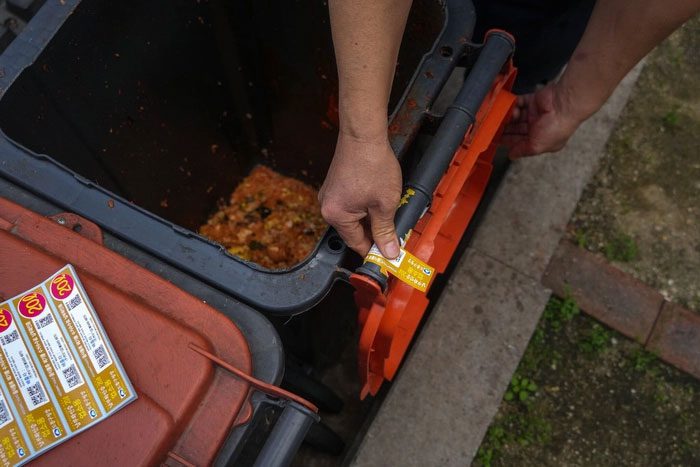
At the end of the day, restaurant leftovers are poured into a special bin.
In the morning, companies contracted by the local government clear those bins. Park Myung-joo and his team start driving the streets at 5 a.m., tearing off the labels from the bins and emptying their contents into their truck.
They work every day except Sunday. By noon, they arrive at the food waste processing facility in Dobong and unload the collected food waste.
There, debris such as bones, seeds, and shells are separated. A conveyor belt feeds the food into a grinder, while items that cannot be processed are filtered out and incinerated.
Next, the food is baked and dehydrated. The moisture is channeled through pipes to the wastewater treatment plant. At the treatment plant, part of the moisture is used to produce biogas, while the remainder is purified and discharged into rivers.
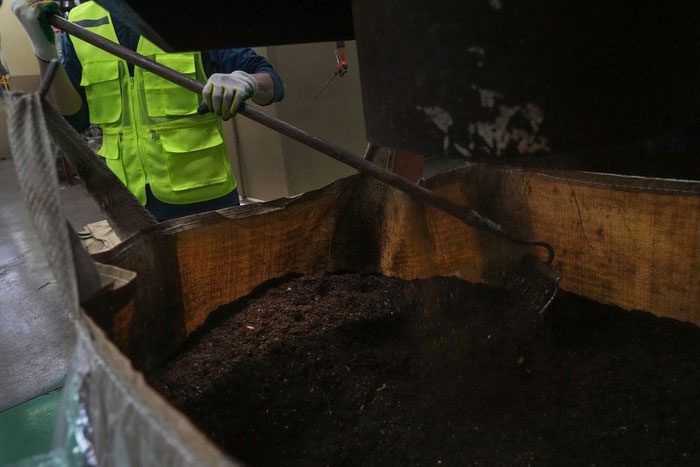
Food waste is processed into animal feed at a facility in Dobong.
The processed food waste is ground into a finished product – a dry, brown powder. This nutritious food will be given to farms in need for chickens and ducks.
Inside the food processing plant, the strong smell clings to clothes and hair. However, the outside remains clean. Pipes run along the building, purifying the air before release.
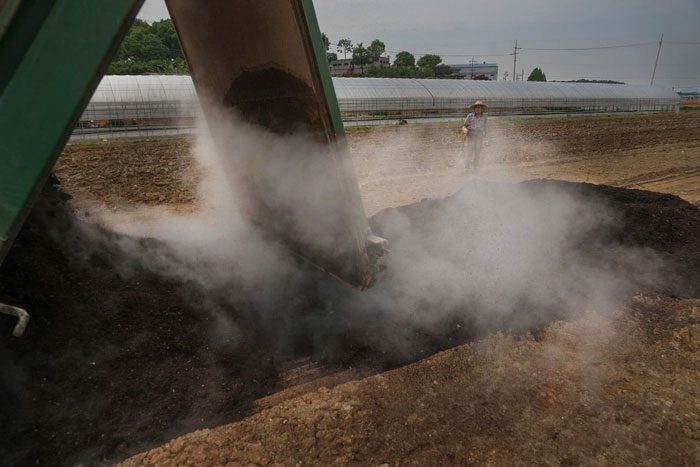
Fertilizer produced at a biomass energy facility is being delivered to a farm in Goyang.
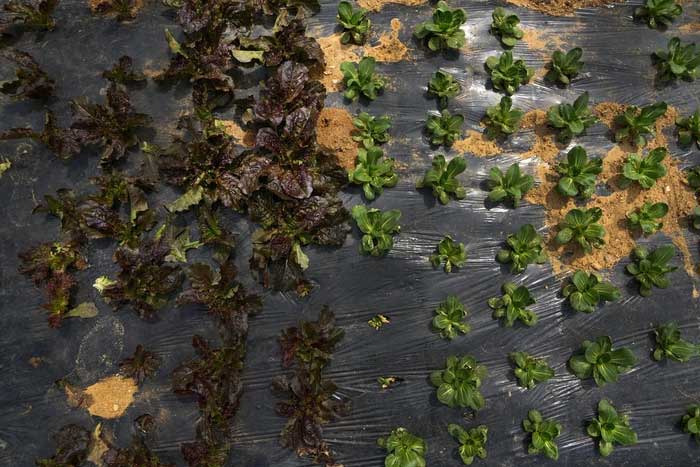
Lettuce and bok choy are grown with fertilizer from energy facilities.

A woman is scanning her card to open the food waste bin at an apartment complex in Seoul.
Each facility operates differently. At the biogas facility in Goyang, a suburb of Seoul, the annual food waste reaches 70,000 tons, which undergoes anaerobic decomposition. The food is placed in large tanks for bacteria to break down organic matter and produce biogas. This biogas is then sold to a local company for heating 3,000 homes in Goyang. The solid waste is mixed with wood chips to create fertilizer, which is then donated.
Challenges Facing South Korea
Despite achieving considerable success, South Korea still struggles to change consumers’ habits of discarding food, although data from the Ministry of Environment indicates that the amount of food wasted has stabilized somewhat compared to previous years.
Additionally, South Korea’s food processing system has some weaknesses. In Deogyang, residents of a village constantly complain about the terrible odors from food processing plants, to the point that they are afraid to open their windows. That facility had to shut down in 2018 due to overwhelming opposition from the local community.


















































